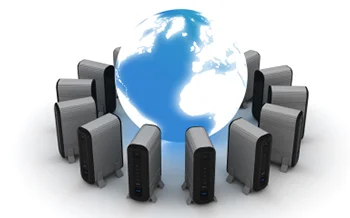Click, Click, BOOM – You’re in Business But Is Your Technology Ready?
It’s a fast business world. Brilliant business ideas can be conjured up at some hipster-filled vegan coffeehouse, a website is thrown together, and poof… in no time at all there is a living, breathing, small business venture accessible from anywhere in the world.
But as your head hits the pillow at night, with visions of becoming the next Mark Zuckerberg dancing in your head, understand that many obstacles will greet you on your road to entrepreneurial success. A fresh innovative idea is merely a start. For every successful startup like Groupon, there are even more that have faltered. Some great, even revolutionary, business concepts that just faded into obscurity; leaving behind nothing but tales of what could’ve been and insurmountable debt.
Failed business technology is often a big reason for this. Many startups think big but tend to operate small-minded to keep overhead and costs down. They then find themselves completely unprepared to meet the demands of growth, particularly when it comes to their IT infrastructure. There is no one-size fit all approach to how to manage technology for optimal efficiency, uptime, and profitability. Especially given the challenges of limited budgets and the need to keep overhead down.
So exactly how do SMBs make sound decisions regarding their technology infrastructure? Choices that are cost-effective enough to get their business off the ground and running without screwing them over once it truly takes off?
Combine On-Site and Off-Site Support for the Best of Both Worlds
Over 45% of SMBs have no dedicated in-house IT staff and no contracted IT consultant regularly monitoring and managing their technology. Roughly only 7 percent of SMBs have a full-time onsite IT technician on payroll. The rest rely on third-party on-call IT companies who appear only when technology goes haywire and disrupts business. These on-call companies can sometimes take a day or two to even show up, which means issues aren’t resolved in a timely and efficient manner. And did we mention they’re expensive?
Most SMBs say they simply can’t afford full-time in-house support. Even those who do budget for it face overwhelming challenges. They often experience a revolving door of on-site help who leave for a larger company and better salary once they’ve beefed up their resume. And those hires that do remain loyal often feel as if they have no reliable help and become overworked and frazzled as the business and their responsibilities grow. Discontent may even set in if wages aren’t raised proportionately to the added responsibilities, or if they grow bored of doing the same mundane repetitive work everyday.
But today’s SMB has access to technology that won’t drain resources. In particular, the evolution of cloud computing and managed services can either automate or re-assign a lot of the day-to-day caretaking of technology to remote employees, leaving onsite support available for more meaningful and potentially profitable projects.
Better yet, it saves money on equipment costs.





